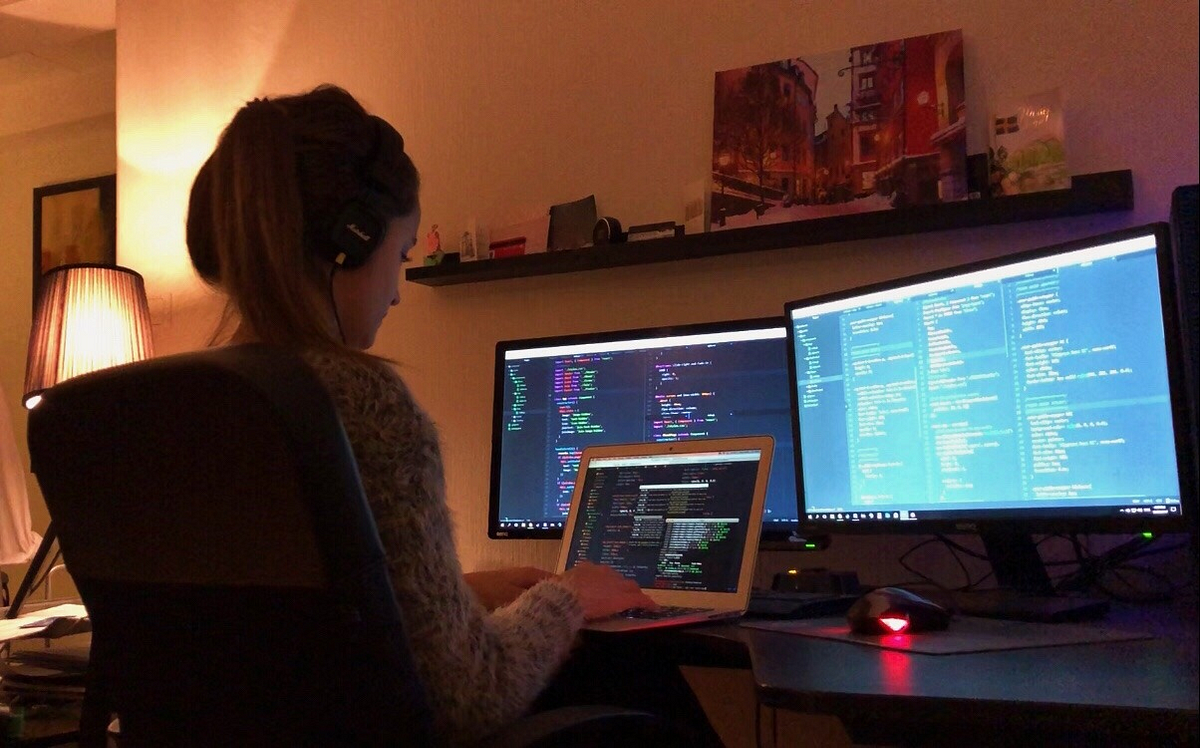Devoted Developers vs. In-House Teams: Which Is Right for You?
The decision in between utilizing dedicated designers and maintaining an in-house group is a substantial one that can affect the trajectory of your tasks and total organization strategy. On the other hand, internal groups contribute to a natural company culture and a nuanced understanding of lasting objectives.
Understanding Committed Programmers
The growing demand for specialized abilities in the technology sector has caused the introduction of specialized programmers as a practical service for numerous companies. These experts are typically acquired on a task basis, permitting firms to leverage particular know-how without the lasting commitment connected with full time hires. Dedicated designers are usually embedded within a client's group, supplying adaptability and scalability to satisfy task needs.
This version enables organizations to access a global talent swimming pool, which is especially advantageous in a rapidly advancing technological landscape. Devoted designers can be sourced from different geographical areas, ensuring that firms can discover the ideal capability at competitive prices. They often bring a riches of experience and knowledge, having actually worked on varied tasks throughout various markets.
Moreover, devoted designers can concentrate exclusively on the tasks available, boosting efficiency and efficiency. They are geared up to integrate effortlessly into existing process, teaming up very closely with in-house groups to accomplish project goals. This strategy not just minimizes the concern of employment and training yet also enables organizations to remain agile, adjusting rapidly to transforming market needs and technological improvements.
Benefits of In-House Teams

Furthermore, in-house groups have a tendency to have a much deeper understanding of the firm's goal, worths, and goals. This alignment can improve staff member engagement and motivation, as employee feel a lot more connected to their job and the company's success. Furthermore, having a committed internal team permits for better placement of purposes and methods, as these members are regularly concentrated on the firm's concerns.
Internal teams additionally promote quicker decision-making procedures, as they can respond extra rapidly to difficulties and changes. The established partnerships and knowledge with firm methods permit structured operations and reduced miscommunication. Ultimately, the mix of a cohesive society, placement with business goals, and reliable communication makes internal groups a useful possession for several organizations, especially those looking to grow long-lasting development and advancement.
Price Considerations
When evaluating cost factors to consider, both committed designers and in-house groups existing distinctive monetary effects for companies. Engaging devoted developers generally includes a pay-per-project or per hour rate model, which can be cost-efficient for organizations with varying project demands. This strategy enables for versatility in scaling resources up or down, ensuring that firms just pay for the solutions they need.
In comparison, internal teams require fixed expenses, consisting of wages, advantages, and overhead expenses such as workplace area and tools. While this design supplies greater control and instant accessibility of resources, it may cause greater long-lasting expenses, specifically if the workload does not justify a full time personnel.
Furthermore, companies ought to consider the hidden costs related to employment and training of internal employees, which can better stress budgets. In many cases, the time and sources invested in managing an internal group can interfere with the organization's core service purposes.

Task Monitoring and Adaptability
Project administration and adaptability are critical variables that influence the choice in between in-house groups and specialized programmers. Devoted programmers generally supply a high level of adaptability, allowing organizations to scale sources up or down based upon project needs. This dexterity can be specifically beneficial for companies experiencing changing workloads or those looking for to innovate swiftly. Dedicated teams typically have actually developed procedures for handling jobs efficiently, leveraging certain methodologies like Agile or Scrum, which assist in repetitive development and versatility.

Ultimately, the choice between devoted designers and in-house groups depends upon the wanted degree of flexibility and the particular job monitoring demands. Companies must review their operational characteristics, job complexity, and source accessibility to establish which option lines up ideal with their critical purposes.
Making the Right Option
Picking the best growth technique-- internal teams or dedicated designers-- calls for a mindful analysis of numerous factors that straighten with a business's strategic objectives. Alternatively, internal groups can supply much better continuity and integration with existing employees.
Next, evaluate your spending plan. Devoted designers usually offer a cost-efficient option for temporary jobs, while internal groups might sustain higher lasting expenditures as a result of incomes, advantages, and overhead prices. Analyze the degree of control and partnership preferred; Visit This Link internal groups normally cultivate more powerful communication and placement with business culture.
If prompt outcomes are required, devoted designers can be onboarded quickly, whereas building an in-house group takes time for employment and training. If continual advancement is vital, spending in an internal team might yield far better returns over time.
Conclusion
In conclusion, the choice between internal groups and specialized designers rests on task requirements and organizational objectives. Committed developers provide flexibility and specialized know-how, making them ideal for temporary efforts. On the other hand, in-house teams grow a natural culture and deeper alignment with lasting objectives. Cautious assessment of budget constraints, task timelines, and preferred control levels is necessary for determining one of the most proper method, guaranteeing alignment with critical concerns and operational performance.
The decision between making use of committed developers and maintaining an in-house team is a considerable one that can affect the trajectory of your jobs and general company method.Task monitoring and adaptability are vital aspects that affect the option in between internal teams and specialized developers. software engineering staffing.In contrast, in-house teams might succeed in maintaining a consistent task management structure due to their knowledge with the organization's society and long-term goals. Devoted programmers frequently provide a cost-effective option for temporary tasks, while in-house teams may incur greater long-lasting expenditures due to wages, advantages, and overhead expenses.In final thought, the choice in between committed developers and in-house teams hinges on job demands and organizational goals